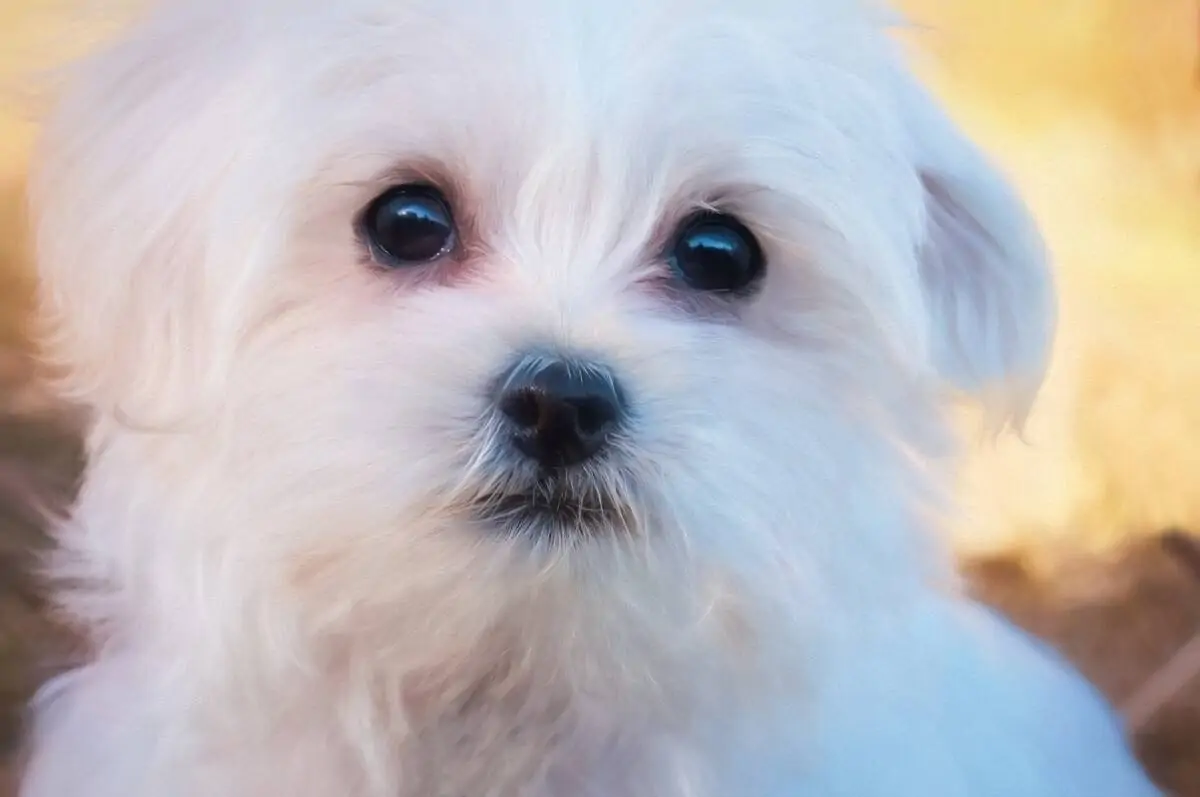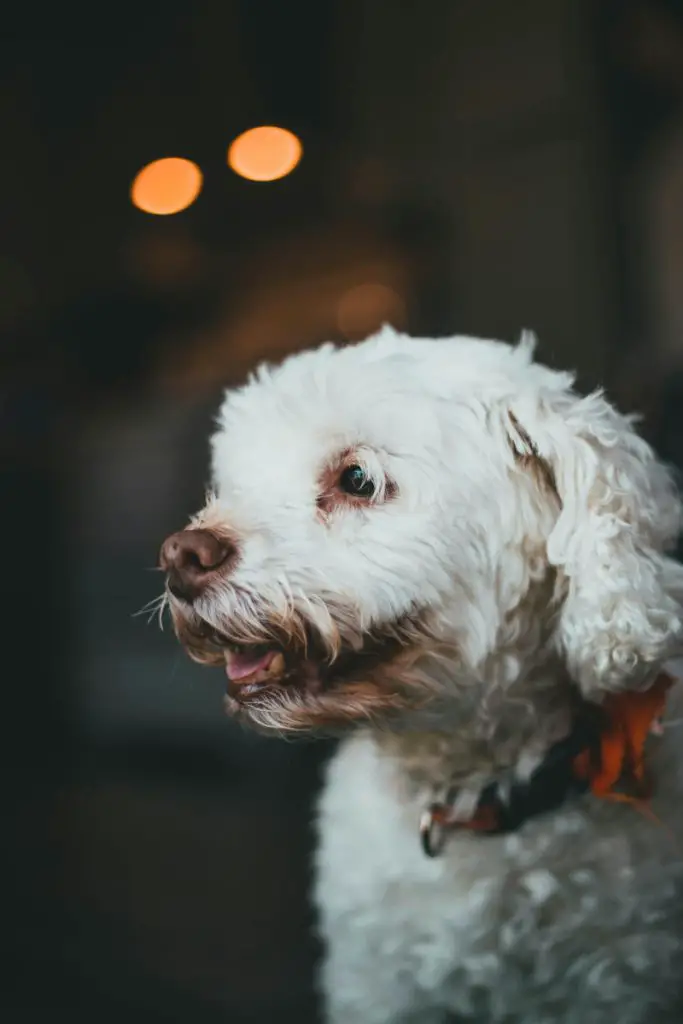Don’t be alarmed if you’ve noticed your dog’s fur turning a rust color! Although this can appear unsettling, it’s not immediately harmful to your pup. This fur staining is a symptom of an underlying condition, which is most often easily identified.
A dog’s fur may turn a rust color due to a yeast infection or porphyrin production in their tears, saliva, urine, and/or feces. When in contact with a dog’s coat, yeast and porphyrin can both result in staining fur a dark red or brown color.
Fur staining is common among various breeds, especially in white fur dogs. Medical and non-medical treatment options are available depending on the cause of the staining. Keep reading to learn what causes rust fur staining, how to solve it, and what dogs are most susceptible to it.
Contents
What Causes Rust Color on White Dogs?
Besides letting your dog accidentally scrub up against a rusty fence or car, there are a few other ways a rust color can appear on your dog.
A primary cause of red-brown fur staining is porphyrin, which contains iron and is produced when the body breaks down red blood cells. Porphyrin is typically released through feces but also in your dog’s tears, saliva, and urine.
If rust fur staining is appearing specifically on your dog’s back, here are a few potential causes:
- Medical Issues – Medical issues such as periodontal disease and dental problems can result in excess saliva production. When your dog grooms themself, the saliva may transfer onto their back and cause staining. just as likely is another dog licking your dog’s back and causing the transfer of these issues.
- Allergies – Just like people, dogs can be allergic to pollen, certain foods, etc. Itchiness is often a symptom of allergies, which dogs relieve by itching themselves. In turn, this transfers saliva onto their coat, which may cause staining.
- Behavioral Conditions – Excessive licking, which will transfer saliva onto your dog’s coat and cause staining, can be a symptom of stress or anxiety, boredom, or even pain. These can be caused by a dog’s environment, other animals, or even people.
It’s also possible that your dog’s fur staining doesn’t have anything to do with porphyrin but instead results from a yeast infection. These are the result of too much fungus or bacteria on your dog’s skin. Yeast infections can cause itchiness and fur staining.
They can be difficult to solve because they create a vicious cycle. Yeast infections make your dog itch, which transfers more saliva onto their coat and creates a humid and wet environment. Bacteria and fungi love humid and wet places, so the yeast infection thrives and just makes your dog itch more.
In addition, saliva can turn white fur a rust color, which is fairly common amongst heavily salivating dogs. An interesting discussion occurred on the exact subject. Check it out here on Reddit.
- Pro Tip: If your dog has actual rust stains on their back, don’t worry: rust isn’t toxic and can be easily removed by a good bath.
For stubborn stains, make a paste using baking soda and water. Apply the paste, let it dry, and then wipe it off using a damp cloth.
One of the most common areas for rust staining is under your dog’s eyes. Because tears can also contain porphyrin they will be the main reason your dog has staining under their eyes. For more information on this particular area then check out this article.
Dog Fur Turning a Rust Color Treatment
Let’s outline some of the treatments available to remove rust color from dog fur.
The best way to solve fur staining is to address the underlying issue. This can include:
- Medical Treatments – Seeking medical treatment from your veterinarian solves both your dog’s condition and their fur staining. It’s important to not assume your dog’s fur staining is simply superficial, so getting it checked out will prevent any longer-term damage from occurring.
- Topical Treatments – Yeast infections are often solved through the use of topical treatments, such as antifungal shampoos or oral medication. A good routine of cleanliness and grooming should reduce the chance of your dog catching a yeast infection. Because yeast loves warm, moist areas, it’s important to dry your dog well after each wash. Check out our article on “5 Ways To Dry Your Dog” for more information.
- Allergens and Triggers – Avoiding allergens and/ or medicating your dog should help reduce or resolve their symptoms. Knowing your dog can be one of the best ways to identify future problems, keep a record of past issues, this will allow you to refer back to the problem and may help to find a solution quicker.
- Quality Diet – A high-quality or prescription diet is the best solution to food allergies and should resolve the fur staining. This of course is a longer more difficult route to take, speaking to your vet or animal nutritionist can help to identify the best food for your dog.
- Apple Cider Vinegar – Adding a teaspoon of distilled apple cider vinegar to your dog’s water introduces acetic acid to their diet, which helps fight off yeast infections. Ensure that the vinegar is well diluted in the water, dogs aren’t keen on acidic smells and with a nose like theirs, you won’t be able to sneak in an extra helping. Check out our article on “Smells Dogs Hate”, where we test out different smells to determine the most hated.
- Proper Grooming – As mentioned above, regularly grooming your dog (brushing, bathing, etc.) will help with yeast infections. A good grooming routine will also help with fur staining, but without solving the underlying issue, fur staining will simply come back.
But keep in mind these are all long-term solutions. For a quick resolution, try these steps:
- Thorough Bathing—Give your dog a thorough bath to clean its body and hopefully remove the fur staining. Remember to use hypoallergenic shampoos that are free of perfumes, sulfates, parabens, and other harsh chemicals. As a dog owner, you are probably used to bathing your dog, but sometimes substances like sap require further knowledge to clean correctly.
- Commercial Products – Local and online pet stores should carry stain removers. Typically these are marketed for tear stairs, but these are also caused by the porphyrin and so should work for fur staining on other body parts.
- Hydrogen Peroxide – Using water-diluted hydrogen peroxide (10 parts water and one part peroxide), gently clean off your pet’s back and any other stained areas. Make sure to keep this mixture away from their eyes, ears, nose, and mouth.
Other DIY home remedies exist, but they tend to be more complicated, take a longer period of time to work, or are generally unrealistic for young or energetic dogs.
If you’re unsure of the cause, try working your way down the list one item at a time. Depending on which solution is most effective, address the underlying cause and either remove or mitigate it as much as possible from your dog’s environment.
Consult with your veterinarian if none of the solutions help. They’ll be able to physically examine your dog and come up with a more comprehensive and targeted treatment plan.
Recurring yeast infections rather than an isolated occurrence is indicative of a more serious problem. But just to be safe, make an appointment with your veterinarian before treating your dog if you suspect they have a yeast infection.
Yeast infections can be a result of underlying medical conditions, such as seborrhea or allergies. Your vet can provide you with an accurate diagnosis and supply medical or topical treatments if necessary. For more information on grooming white dogs check out this article.
Dogs That Are Susceptible to Rust Fur Stains
Any dog can develop rust fur stains due to porphyrin or a yeast infection, no matter their age, breed, or coat color. Dogs with white fur aren’t necessarily more susceptible to these conditions, but you are more likely to notice these conditions as a result of the stark color contrast.
Breeds that traditionally have white coats that would immediately show rust fur staining include:
- Samoyeds
- Pyrenees
- Huskies
- Golden Retrievers
- American Eskimos
- Pomeranians
- Japanese Spitz
- Lhasa Apso
This is just a short list; in reality, there are over 30 dogs that are primarily bred with white coats. But, as mentioned earlier, a white coat doesn’t predispose dogs to fur staining. Breeds with dark coat colors, spotted coats, and mixed coat colors can all suffer from rust stains. Below is an image of my golden retriever and me as a puppy; his fur has changed color significantly over the years. This is a natural thing to happen, and you should worry about natural changes in your dog’s fur color as they grow.

The color of a dog’s coat isn’t the only factor at play, however. Dogs with these conditions are also more prone to fur staining:
- Poor Drainage
- Short Noses
- Shallow Eye Sockets
- Narrow Eyes
- Narrow Tear Ducts
- Extra Skin Folds
This means that breeds like Maltese, Poodles, Pekingese, Boxers, Bulldogs, Bull Terriers, Bichons, and others are at a higher risk of showing rust fur stains.
Typically, you’ll see eye and mouth staining in breeds that meet these criteria before you see rust stains on their back. This is because medical, anatomical, and conformational issues more commonly affect areas around the eyes and mouth.
For example, a dog with shallow eye sockets will probably be more prone to eye irritation, blocked tear ducts, and bacterial, viral, or fungal infections. This results in more tears and eye secretions, causing higher amounts of porphyrins in the tears versus saliva.
Therefore, it’s not unusual to see rust stains on your dog’s face before you see it on their back.
Conclusion
As soon as you notice fur staining anywhere on your dog, take action to address the underlying causes and prevent future occurrences. Taking some of these tips on board, you should be able to clear rust stains from your dog’s fur. If you enjoyed this article, check out our other articles about getting outside with your dog.



